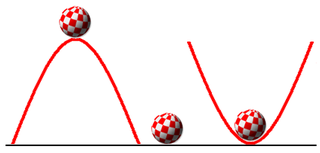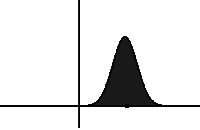This article is an orphan, as no other articles link to it . Please introduce links to this page from related articles ; try the Find link tool for suggestions. (January 2018) |
Charged particle beams in a particle accelerator or a storage ring undergo a variety of different processes. Typically the beam dynamics is broken down into single particle dynamics and collective effects. Sources of collective effects include single or multiple inter-particle scattering and interaction with the vacuum chamber and other surroundings, formalized in terms of impedance.
A charged particle beam is a spatially localized group of electrically charged particles that have approximately the same position, kinetic energy, and direction. The kinetic energies of the particles are much larger than the energies of particles at ambient temperature. The high energy and directionality of charged particle beams make them useful for applications.

A particle accelerator is a machine that uses electromagnetic fields to propel charged particles to very high speeds and energies, and to contain them in well-defined beams.

A storage ring is a type of circular particle accelerator in which a continuous or pulsed particle beam may be kept circulating typically for many hours. Storage of a particular particle depends upon the mass, momentum and usually the charge of the particle to be stored. Storage rings most commonly store electrons, positrons, or protons.
Contents
- Types of collective effects
- Formalisms for treating collective effects
- Software for computation of collective effects
- References
The collective effects of charged particle beams in particle accelerators share some similarity to the dynamics of plasmas. In particular, a charged particle beam may be considered as a non-neutral plasma, and one may find mathematical methods in common with the study of stability or instabilities. One may also find commonality with the field of fluid mechanics since the density of charged particles is often sufficient to be considered as flowing continuum.

Plasma is one of the four fundamental states of matter, and was first described by chemist Irving Langmuir in the 1920s. Plasma can be artificially generated by heating or subjecting a neutral gas to a strong electromagnetic field to the point where an ionized gaseous substance becomes increasingly electrically conductive, and long-range electromagnetic fields dominate the behaviour of the matter.

A non-neutral plasma is a plasma for which the total charge is sufficiently different from zero, so that the electric field created by the un-neutralized charge plays an important or even dominant role in the plasma dynamics. The simplest non-neutral plasmas are plasmas consisting of a single charge species. Examples of single species non-neutral plasmas that have been created in laboratory experiments are plasmas consisting entirely of electrons, pure ion plasmas, positron plasmas, and antiproton plasmas.

The stability of a plasma is an important consideration in the study of plasma physics. When a system containing a plasma is at equilibrium, it is possible for certain parts of the plasma to be disturbed by small perturbative forces acting on it. The stability of the system determines if the perturbations will grow, oscillate, or be damped out.
Another important topic is the attempt to mitigate collective effects by use of single bunch or multi-bunch feedback systems.

Feedback occurs when outputs of a system are routed back as inputs as part of a chain of cause-and-effect that forms a circuit or loop. The system can then be said to feed back into itself. The notion of cause-and-effect has to be handled carefully when applied to feedback systems:
Simple causal reasoning about a feedback system is difficult because the first system influences the second and second system influences the first, leading to a circular argument. This makes reasoning based upon cause and effect tricky, and it is necessary to analyze the system as a whole.






